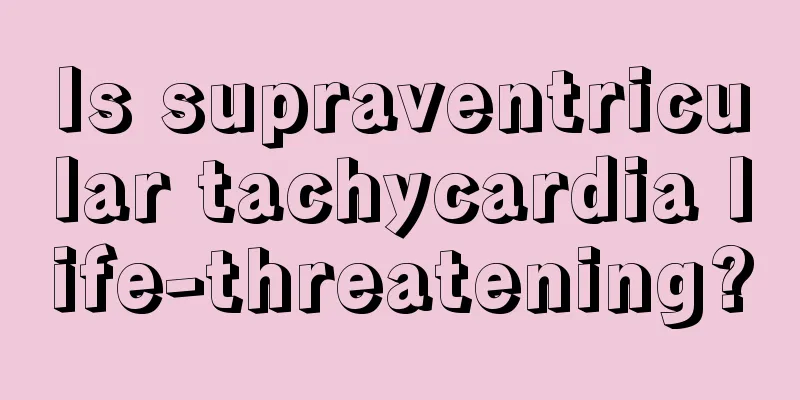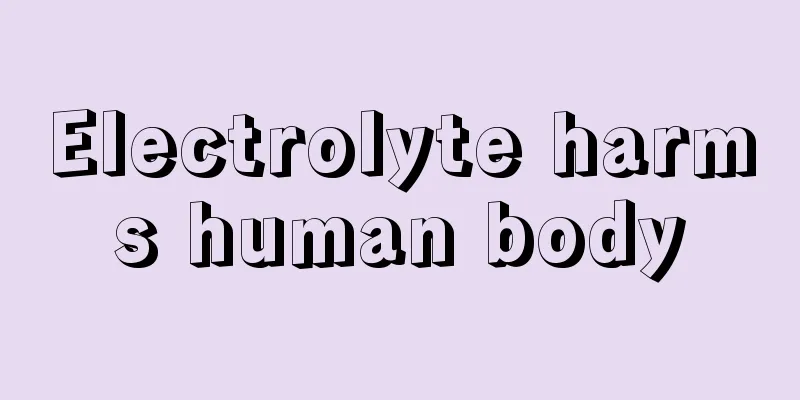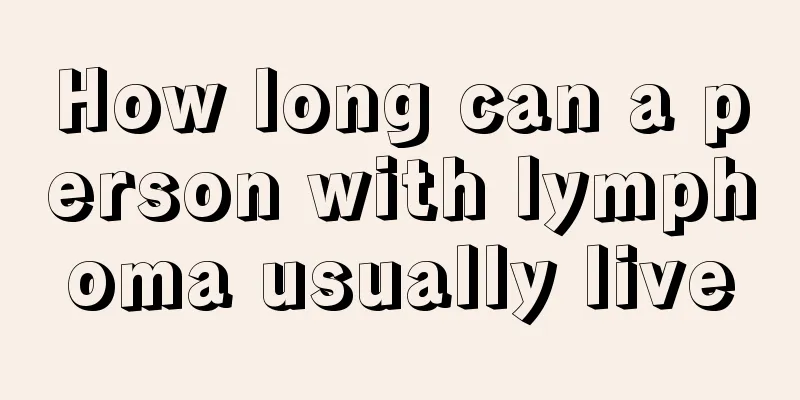Is supraventricular tachycardia life-threatening?

|
Whether supraventricular tachycardia is life-threatening is a question many people ask. Ventricular tachycardia is a manifestation of heart disease and is the abbreviation of supraventricular tachycardia. Patients experience palpitations and discomfort in the precordial area, and an electrocardiogram shows a heart rate of more than 100 beats per minute. This disease is relatively common in clinical practice and can easily cause sudden death. The prevention of this disease is also very important. Patients should pay attention to rest and avoid overwork. Paroxysmal supraventricular tachycardia is a common arrhythmia, which is a series of clinical manifestations caused by a sudden and rapid increase in heartbeat. This disease is common in people without organic heart disease, more common in young people than in old people, and slightly more common in women than in men. It has now been proven that paroxysmal supraventricular tachycardia is related to certain congenital heart structural abnormalities, and this tiny structural change cannot be detected without special examination in most cases. Symptoms: When the patient is in a calm state and without any warning signs, the heartbeat suddenly accelerates, with the pulse usually between 160 and 240 beats per minute, and in children it can reach 300 beats per minute. The heartbeat also returns to normal suddenly. The duration of an attack varies, from a few seconds to a few days. In most patients, the attack can terminate on its own, but in a few patients, medication is required to terminate the attack. Other symptoms vary in severity. In mild cases, there may be only palpitations, shortness of breath, dizziness, and fatigue. In severe cases, there may be chest pain, difficulty breathing, fainting, convulsions, or shock. The severity of the symptoms depends on the speed of the heart rate during the attack, whether there are other heart diseases and the patient's tolerance. Diagnosis: Electrocardiogram can be used to make the diagnosis when the disease occurs. The electrocardiogram may be normal when the disease is not severe. Go to the hospital for an induction test and do an electrocardiogram after induction to confirm the diagnosis. For some patients, the electrocardiogram shows preexcitation syndrome or short PR sign when they are not ill, which is helpful for diagnosis. If the electrocardiogram shows preexcitation syndrome or short PR sign but the patient does not develop any disease, no treatment is required. |
<<: What should you pay attention to during supraventricular tachycardia
>>: The best treatment for ventricular tachycardia
Recommend
What are the aerobic exercises per week
Doing more aerobic exercise can effectively help ...
What are the methods for identifying latent glomerulonephritis?
Latent glomerulonephritis is a disease with a rel...
How long is the shelf life of perfume
Most female friends who love beauty use perfume. ...
Why do I feel dizzy after eating durian?
Durian is a hot food. Eating it in moderation has...
What are the traditional Chinese medicines for treating liver cancer? 5 kinds of traditional Chinese medicines can treat liver cancer
As we all know, the current treatment for cancer ...
What are the differences between blood-heat palms and liver palms
Palmar erythema is extremely common in many peopl...
Is colorectal cancer serious?
Colorectal cancer brings a lot of troubles. Many ...
How is muscular dystrophy treated?
Muscular atrophy is relatively common at present....
The soles of my feet are sore and swollen and I always want to massage them
The soles of the feet feel sore and swollen, you ...
What can spare ribs be stewed with
Pork rib soup is not only delicious but also can ...
Tear groove filling effect
The tear trough is the area next to the eye. If i...
How much does radiotherapy for breast cancer cost
How much does breast cancer radiotherapy cost? Br...
Can I drink alcohol after getting a rabies vaccine?
Rabies vaccine is also a common vaccine at presen...
How to whiten yellow teeth
Nowadays, people pay more and more attention to t...
The reason why fermented rice becomes sour
Fermented glutinous rice is a popular food, and i...









